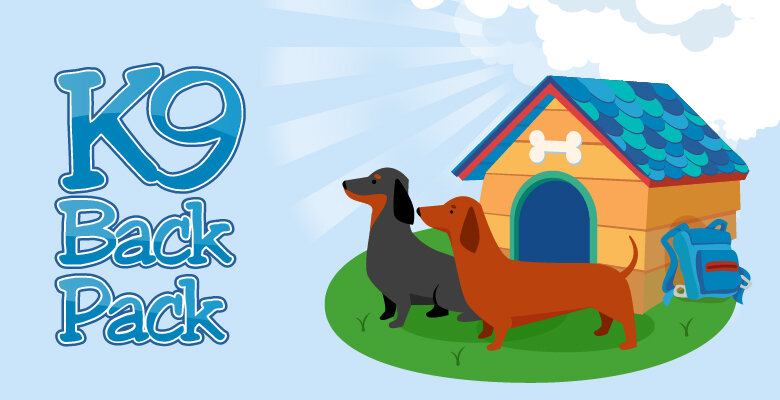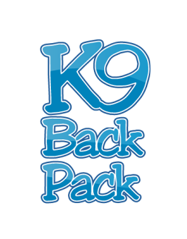Dictionary
A
Acupuncture: Traditional Chinese Medicine treatment that can be used in combination with both conservative treatment and post op. It reduces swelling, speeds healing and promotes neuro regeneration. A low percentage of dogs do not have positive results to it, but those numbers are really low.
Analgesic: Medicine. General pain killers. The most commonly used during a disc herniation is Tramadol.
Anti-inflammatory: Medicines that reduce swelling. There are 2 kinds: Steroids and non-steroidal anti-inflammatory drugs (commonly referred to as NSAIDs). The most commonly used Steroids are Prednisone, Prednisolone and Dexamethasone. The most commonly used NSAIDs are: Rimadyl, Metacam, etc.
Antineuritic: Medicines used to target nerve pain specifically. The most commonly used during a disc herniation is Gabapentin, which can be used along with Tramadol (an analgesic) to provide better pain relief. Gabapentin is also used when a dog has Neuropathy (see below).
Atrophy or Muscle Atrophy: When a dog's muscles do not function correctly and slowly lose tone and volume. Physical therapy (active and passive) can help maintain muscle tone and prevent atrophy.
B
Bladder control: The ability of the dog to pee on its own. Bladder control is determined by taking the dog outside and it emptying its bladder on its own, without help from the owner or vet. If the dog requires any assistance, or if the dog leaks or wets its bedding, he does NOT have bladder control and requires expressing.
Bulging Disc: It is a disc that has a weak cortex that is swollen and presses on the spinal cord, but is not yet ruptured.
C
Cervical: The neck. If a dog has a cervical herniation, it means the location of the herniation is between the head and the shoulders of the dog.
Cortisone: A common way to refer to glucocorticoids, which are medicines commonly used to control the swelling during a disc herniation. The most commonly prescribed are: Prednisone, Prednisolone, and sometimes Dexamethasone.
Cold Laser: It is a supportive treatment used both during conservative treatment and post op. The laser is used to reduce swelling and pain as well as to speed healing.
Conservative Treatment: Refers to the use of crate rest and medicines (with or without acupuncture, cold laser and other supportive treatments) alone, to allow the dog’s body to heal from a disc herniation.
Crate rest: Limiting the dog´s mobility to a small area (no more than 1.5 times the length of the dog by 2 times the length of the dog) for an extended period of time (6 weeks if the dog had disc surgery, and 8 weeks if the dog did not have surgery). The dog is allowed short breaks to urinate and defecate, but those breaks must be in a small area and for no longer than 5 minutes. Frequency depends on the dog’s particular needs.
D
Deep Pain Sensation: Pain is the most basic neurological function. The one that requires fewer nerves to work, and the last neuro function lost when there is a disc herniation. Vets test for DPS by pinching between the toes of the dog using forceps. If the dog responds (yelping, withdrawing the foot, looking back as if saying ¨Why did you do THAT for?¨), the dog still has DPS.
Diarrhea: Runny stools. This is a common side effect from anti-inflammatories and steroids, and needs to be addressed by the vet immediately in order to prevent an ulcer. Usually requires gastric protectors and a diet modification.
Discs: The cushions that exist between the bones of the spine. They are shock absorbers and are made of water, collagen, chondroitin and other substances. When they age faster than normal and dry up, the dog might have IVDD, and the discs can crack open, causing a herniation.
E
Expressing: Manually pressing on the dog’s bladder to empty it from urine. This is required if the dog does NOT have bladder control, and it’s usually done every 4-5 hours during the day. If it’s not done often enough, the dog could develop an infection.
Extrusion: When a disc’s wall tears and disc material oozes out and presses on the spinal cord. Commonly referred to as a herniation.
F
Fenestration: It’s a procedure done while the dog is having surgery to correct a disc herniation. Fenestration is when the surgeon pokes and removes a bit of disc material from the discs close to the one that herniated. It is believed this procedure reduces the chances of the fenestrated discs herniating on their own in the future.
G
Gait: The way the dog positions its hind legs and feet. If the dog has an ¨unsteady gait¨, it means the dog is not able to stand and walk correctly. Commonly referred to as ¨drunken walk¨.
Gastric Protector: There are 2 basic kinds of gastric protectors commonly used along with other medicines during a disc herniation: An acid reducer (Like Pepcid or Famotidine), which just lowers the amount of stomach acids the dog produces; and a stomach coater (Like Sucralfate), which creates a coat that protects the lining of the stomach. Sometimes dogs require the use of BOTH kinds of gastric protectors at the same time.
H
Hemilaminectomy: The name of the surgery most commonly done to correct a disc herniation. The surgeon accesses the herniated disc and scrapes off the material that is pressing on the spinal cord.
Herniation: When a disc’s wall tears open and disc material oozes out and presses on the spinal cord.
I
IVDD or Intervertebral Disc Disease: It is a condition, most likely genetic, that causes the discs of a young dog (between 3 and 8 years of age) to age and dehydrate faster than normal. The symptom of IVDD is a disc herniation.
K
Kiddie Pool: A small, portable pool. Frequently used to practice water therapy at home.
L
Laser Disc Ablation: It is a PREVENTIVE surgical procedure in which the discs that most commonly herniate in IVDD dogs are ¨zapped¨ with a laser (while under anesthesia) to decompress the discs and promote the hardening of the annulus, or cortex of the discs. This is NOT the same as a Hemilaminectomy, which is the sugery to remove the herniated disc material of an IVDD dog.
Lumbar: Area of the dog’s body between the last rib and the hips.
M
Mobility: The ability of a dog to walk, run, wag its tail and move on its own. Mobility is usually lost during a severe disc herniation.
Myelomalacia: It is a condition that happens in a low percentage of dogs that have a severe disc herniation. Myelomalacia causes the spinal cord to slowly die. It usually advances upwards slowly, at a rate of approx. 1 centimeter per day. Symptoms usually appear within one week of the initial disc herniation: Labored breathing, lethargy, loss of anal tone. As the condition advances the dog becomes more lethargic and has difficulty breathing. This condition is fatal.
N
Nerve Root: The area where nerves ¨sprout¨ from the nerve cord and go to other areas of the body.
Neuropathy: It is a condition in which the dog’s nerves overreact and produce feelings of tingling and electric shocks in different areas (most commonly the toes, feet, legs and tail, but location depends on the location of the herniation itself). Requires immediate medical treatment with antineuritic medicine.
P
Pain Killers: See ¨Analgesics¨.
Physical Therapy: Exercises done to prevent loss of muscle mass and help the dog recover mobility. There are 2 kinds of Physical Therapy: Active and Passive. Active physical therapy is when the dog is stimulated to move on its own, and passive physical therapy is when the owner or therapist exercise the dog’s muscles, joints and limbs for him. Active physical therapy is usually started one week after surgery, once the sutures are closed. If the dog did not have surgery, active physical therapy can be started once crate rest is finished. Passive physical therapy can be done as soon as the symptoms of swelling are gone or when the vet OK’s it.
Protrusion: See ¨Bulging Disc¨.
R
Reflex: A basic neurological function. It is a local reaction to stimuli, meaning that the limb or body part reacts without needing to send and receive information to and from the brain.
Rest: See ¨Crate Rest¨.
S
Slipped Disc: See ¨Bulging Disc¨. Some vets may use this term when referring to a disc herniation.
Spinal Cord: The main communication system between the brain and the rest of the dog’s body. The spinal cord travels along the whole back of the dog, protected by bones (vertebrae). From the spinal cord, other nerves come out, that send and receive information from and to the brain, limbs and organs.
Spinal walking: It is when the dog is able to walk by reflex alone. It is uncommon, but can happen in dogs that do not have deep pain sensation, or that had severe disc herniations. It is usually uncoordinated.
Steroids: A common way to refer to glucocorticoids, which are medicines commonly used to control the swelling during a disc herniation. The most commonly prescribed are: Prednisone, Prednisolone, and sometimes Dexamethasone.
T
Thoracic: Area of the dog’s body between the shoulder blades and the waist. All along the ribs.
U
UTI: Urinary Tract Infection. These are not uncommon in dogs with IVDD that have no bladder control. Some of the symptoms are strong smelling, cloudy, or bloody urine. UTIs require antibiotics. Sometimes a culture is recommended to determine the correct antibiotic that will kill the particular bacteria the dog has and longer administration of medication if the infection keep returning.
V
Ventral Slot: The name of the most common surgery perfomed on a dog that has a cervical (neck) herniation. The surgeon accesses the neck's discs from the side of the neck and removes the herniated disc material that is pressing on the spinal cord.
Vertebrae: The bones of the spine. There are 3 areas of the vertebral body that contain discs between the bones: The Cervical (or neck), the Thoracic (along the ribs) and the Lumbar area (the waist). To locate a disc herniation, the radiologist will name the vertebrae above and below the herniated disc. For example: T13-L1 means the location of the herniation is between the 13th. Thoracic vertebra and the 1st. Lumbar vertebra. C3-4, means the herniation is located between the 3rd and 4th. Cervical vertebrae.
W
Water therapy: Active physical therapy that requires the dog to walk in water or lightly swim.


